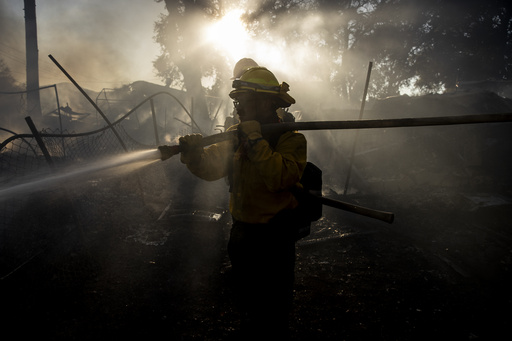Out-of-control wildfires are raging in the foothills of a national forest east of Los Angeles and in a recreational area south of Reno, Nevada, amidst a heatwave with temperatures in the triple digits. The Line Fire, near the San Bernardino National Forest, has burned approximately 32 square miles of land and is a threat to over 36,000 structures, including homes and commercial buildings. In Washoe Valley, Nevada, the Davis Fire has spread to about 10 square miles, prompting evacuations of around 20,000 individuals from various areas including neighborhoods, businesses, and parks.
The extreme heat and dry conditions have made firefighting efforts challenging, with temperatures exceeding 100 degrees Fahrenheit. The Line Fire in California even generated its weather system, creating thunderstorm-like pyrocumulus clouds. Evacuations have been ordered for several areas, including Running Springs and Arrowbear Lake, as firefighters work to contain the blazes.
Residents affected by the fires are facing difficult decisions about whether to evacuate and leave their homes behind. Some, like Running Springs resident Steven Michael King and Angelus Oaks resident Joseph Escobedo, have made the choice to evacuate to ensure their safety and the safety of their families. The fires have impacted communities near popular winter skiing destinations and have led to evacuations, school closures, and a state of emergency declaration in San Bernardino County, California.
In Clearlake City, north of San Francisco, a smaller fire known as the Boyles Fire has burned at least 30 homes, commercial buildings, and numerous vehicles, leading to the evacuation of approximately 4,000 people. The blaze is currently around 10% contained. The wildfires in California and Nevada are a stark reminder of the ongoing threats posed by uncontrolled fires during periods of extreme heat and dry conditions.
Home US News California Wildfires in Eastern LA and Southern Reno Prompt Evacuations as Homes and...
